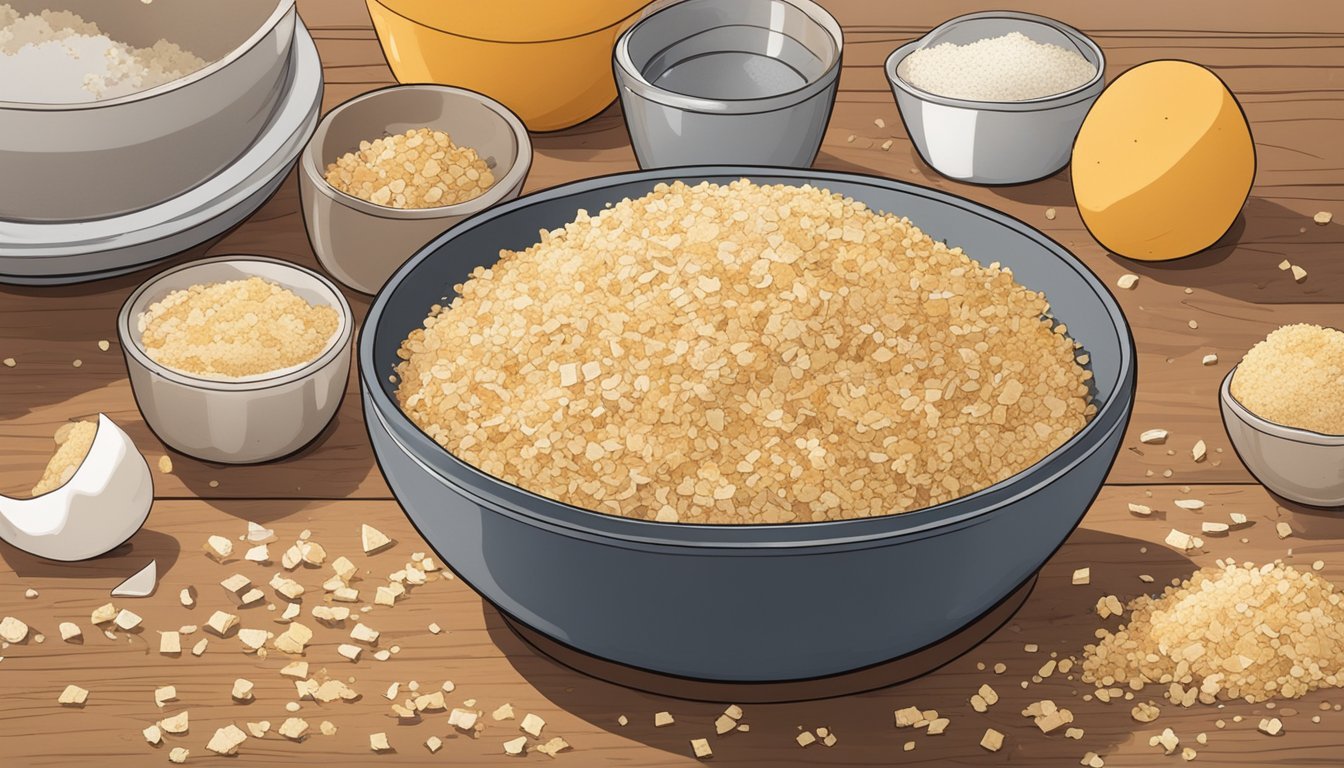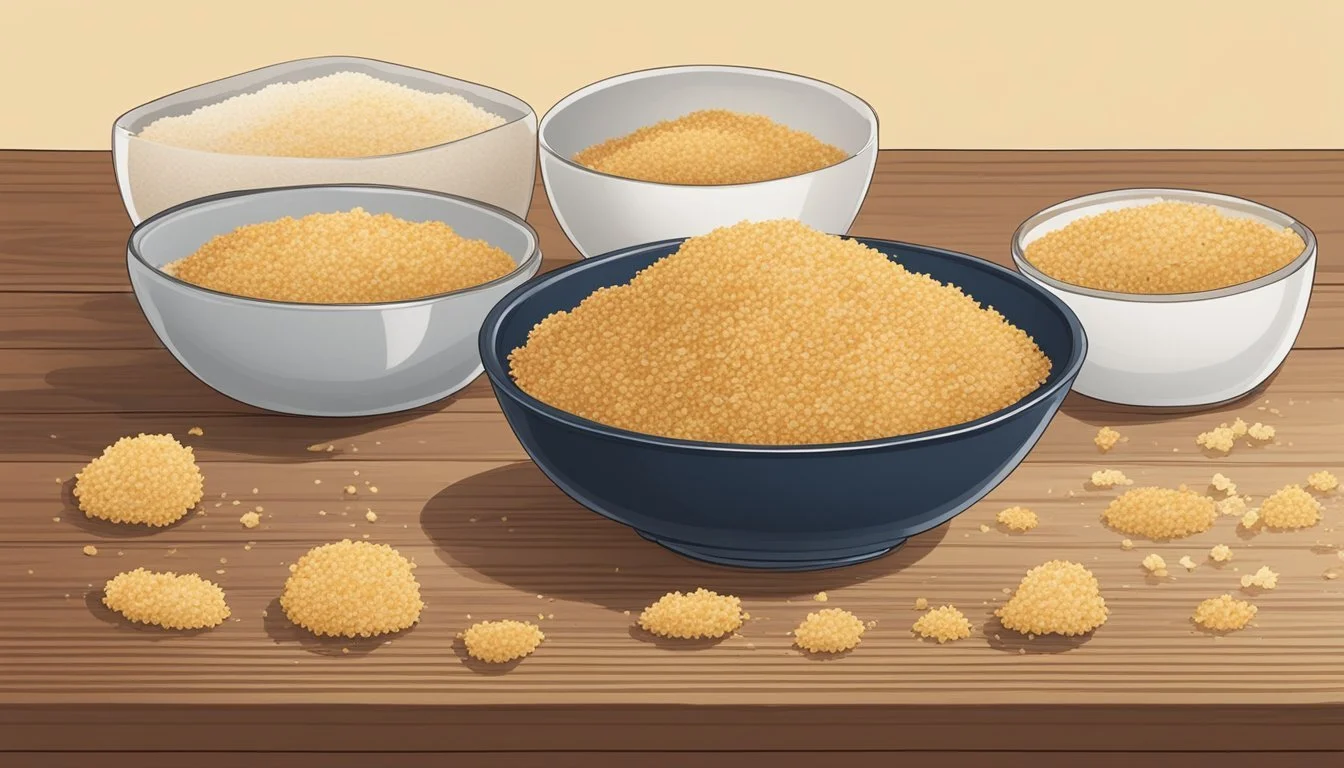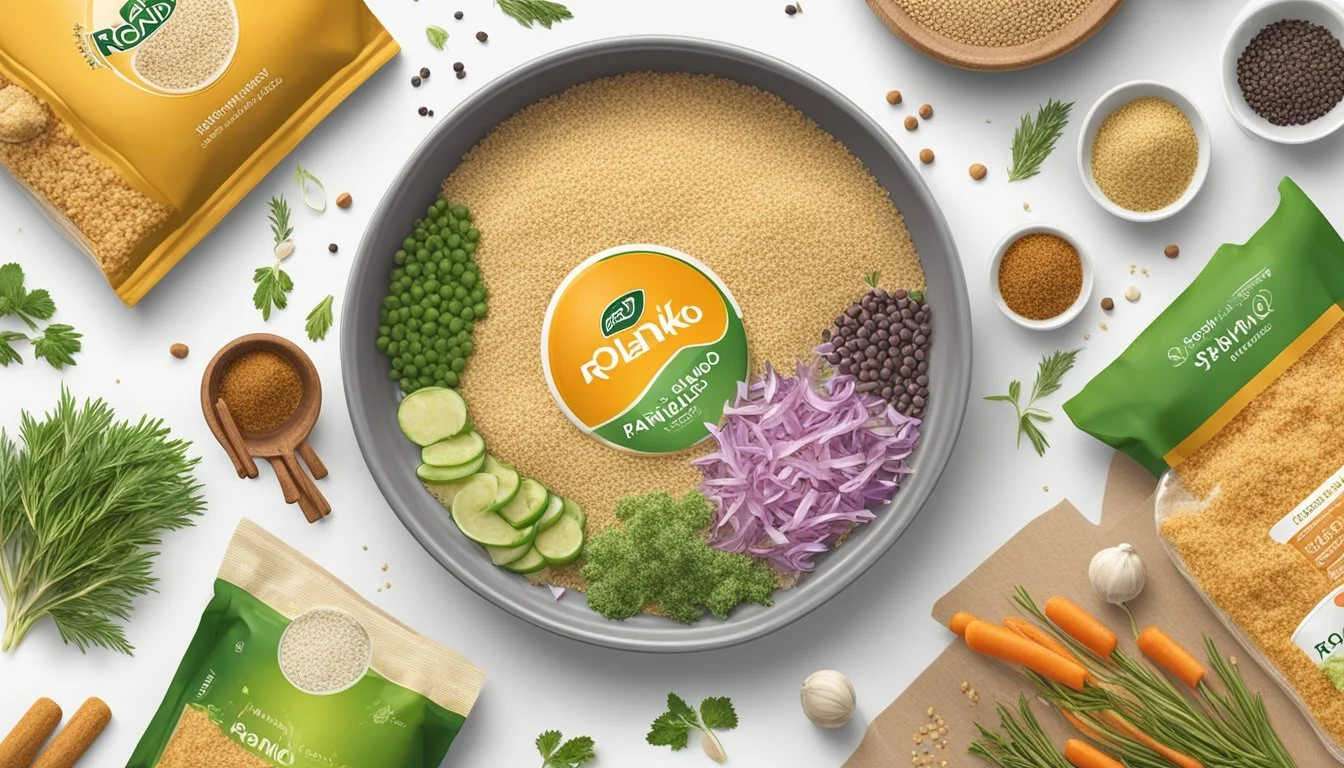Roland Panko Bread Crumbs: Elevating Your Breading Game with a Crunchy Twist
Roland Panko Bread (What wine goes well with bread?) Crumbs offer a distinct texture and versatility that sets them apart from traditional breadcrumbs. Originating from Japanese cuisine, panko crumbs are known for their light, airy, and crisp characteristics which come from using bread without crusts and processing it into flakes rather than just crumbs. This unique quality allows Roland Panko Bread Crumbs to create a delightful crunch when used as a coating for fried or baked foods. Their coarse texture not only adheres well to various foods after dipping in an egg wash but also resists absorption of oil, resulting in a less greasy finish.
These breadcrumbs are a staple in kitchens for creating a host of dishes ranging from the classic chicken katsu to crispy vegetable tempura. The product's natural ingredients, including wheat flour and yeast, contribute to its neutral flavor, making it a versatile component in recipes. Roland Foods ensures these breadcrumbs are readily available in convenient packaging, often in a multi-pack option, to aid both home chefs and professionals in elevating their culinary creations with an enticing crunch and golden-brown finish.
Easy to incorporate into countless recipes, Roland Panko Bread Crumbs also benefit from a shelf-stable nature, meaning they can be stored in pantries without the need for refrigeration. Whether used for coating, topping casseroles (What wine goes well with casseroles?), or as a binder in meatballs and veggie patties, Roland Panko Bread Crumbs have secured their place as a pantry essential, offering a straightforward path to enhancing texture and taste in a wide array of dishes.
History and Origin
In the exploration of panko bread crumbs' background, two pivotal focal points emerge: the rise of panko in Japanese culinary culture and the role of Roland Food Corporation in bringing this ingredient to a wider audience.
Emergence of Panko Bread Crumbs
Panko, Japanese breadcrumbs, are distinct for their flaky and airy texture compared to their Western counterparts. They originated in Japan, adapting from Western influences during the Meiji era. In 1853, with the arrival of the 'Black Ship' from the West, Japan embraced a new cultural period, which included the integration of Western culinary styles. Restaurants began to serve dishes using panko for a crispier coating in foods such as croquettes and fried fish, cementing its place in the unique blend of Eastern and Western cultures.
Roland Food Corporation
Roland Food Corporation stands out as a key player in the global distribution of panko bread crumbs. As an established provider of specialty foods, Roland has introduced panko to the American market and beyond. It supports diverse culinary needs by offering panko products that allow for a perfect crispy texture when cooking. Roland's products follow traditional preparation methods, affirming the authenticity of the Japanese breadcrumb experience while making it accessible for an international palate.
Product Description
Roland Panko Bread Crumbs are known for their distinct physical characteristics and nutritional value, offering a versatile ingredient ideal for a variety of culinary applications.
Physical Characteristics
Roland Panko Bread Crumbs are characterized by their lightness and coarseness, compared to ordinary breadcrumbs. These breadcrumbs are made from wheat flour, creating a crisp and airy texture upon cooking. The tender flakes of Roland Panko Bread Crumbs turn a rich golden brown when cooked, adding not only crunch but also an appealing visual contrast to dishes.
Nutritional Information
Nutrient Amount per Serving Total Carbohydrate See packaging Protein See packaging Iron See packaging Potassium See packaging Sodium See packaging Cholesterol 0mg
The nutritional content of Roland Panko Bread Crumbs typically includes total carbohydrate and protein, contributing to the overall nutritional profile of the breadcrumbs. Additionally, these breadcrumbs are often supplemented with minerals such as iron and potassium. They contain a measure of sodium but boast having no cholesterol, making them a choice ingredient for those monitoring cholesterol intake. As specific values may vary, consumers are advised to refer to the product packaging for exact nutritional information.
Cooking Applications
Roland Panko Bread Crumbs offer versatility in the kitchen, providing a crispy coating for baked or fried dishes and contributing texture to salads and casseroles.
Traditional Uses
For a classic approach, chefs typically use Roland Panko Bread Crumbs to create a golden, crispy exterior on foods. Coating slices of meat or fish follows a standard three-step process: dredging the ingredient in flour, dipping in egg wash, and then evenly coating with bread crumbs. This method is essential for preparing foods such as breaded cutlets or deep-fried seafood, which are valued for their delicate, crunchy textures. In baking, a liberal sprinkle of panko atop casseroles leads to a coveted crispy finish as the crumbs brown in the oven.
Main Coating Steps:
Dredge in flour
Dip in egg wash
Coat in Roland Panko Bread Crumbs
Innovative Recipes
Chefs have embraced the use of Roland Panko Bread Crumbs beyond traditional breading, incorporating them into newer recipes for a textural twist. For instance, a topping of toasted panko can elevate the crunchiness of salads without overpowering the other ingredients. The panko can be seasoned with herbs and garlic to create a pangrattato - often referred to as the 'poor man's parmesan' in Italy - before being sprinkled over roasted vegetables or pasta dishes.
Creative Uses:
Crispy salad topping
Seasoned pangrattato for vegetables and pasta
Roland Panko Bread Crumbs Versus Ordinary Breadcrumbs
Roland Panko Bread Crumbs offer a distinct texture and are used differently in cooking compared to ordinary breadcrumbs.
Texture Comparison
Roland Panko Bread Crumbs:
Coarser: They are noticeably larger and flakier.
Lighter: Despite their size, they have a lighter, airier feel.
Crunchier: Provide a more pronounced crunch after cooking.
Ordinary Breadcrumbs:
Finer: Smaller, more uniform granules.
Denser: Tend to pack more tightly and have less air.
More likely to absorb oil and become soggy.
Usage in Recipes
Roland Panko Bread Crumbs:
Ideal for frying: Achieve a golden-brown crust without absorbing excess oil.
Better suited for dishes where a crispier texture is a priority.
Ordinary Breadcrumbs:
Binding: More effective for binding mixtures, like meatballs or stuffings.
Often used for a softer coating that isn't meant to be as crunchy.
Culinary Techniques
Roland Panko Bread Crumbs offer a versatile range of applications in cooking, particularly in techniques such as breading and frying, and as a crunchy topping in baked dishes.
Breading and Frying
The process of breading and frying with Roland Panko Bread Crumbs starts with preparing the food item to achieve the desired crispness. Typically, a three-step method is employed:
Dust the item with flour to create a dry surface that helps the egg wash to adhere.
Dip in egg wash, a mixture of egg white and water or milk, for a layer that will bind the breadcrumbs to the surface.
Roll in Roland Panko Bread Crumbs, ensuring an even coating.
To cook:
Heat oil until hot but not smoking.
Carefully place the breaded item in the hot oil and fry until golden brown.
The item should be turned occasionally to brown evenly, and one must watch for burning.
Baking and Topping
Roland Panko Bread Crumbs can also be used to add texture and flavor to baked dishes. They can be toasted for enhanced taste and crunchiness. One should perform toasting over medium heat with a bit of oil or butter until lightly browned.
To use as a topping:
Sprinkle the toasted breadcrumbs over casseroles, baked dips, or mac and cheese before baking to achieve a deliciously crispy layer.
For extra flavor, season with garlic and herbs before sprinkling over the desired dish.
Consumer Guidance
When considering the purchase of Roland Panko Bread Crumbs, consumers should evaluate packaging options and understand the proper storage and handling methods to maintain the product's quality.
Purchasing Tips
Roland Panko Bread Crumbs come in an easy-open resealable pouch, which offers convenience and helps maintain freshness. For those who are health-conscious, Roland offers Whole Wheat Panko Bread Crumbs that are certified whole grain. Consumers may find that these breadcrumbs are a best seller due to their lighter, crunchier texture compared to regular breadcrumbs. When purchasing, it's wise to consider the current price of Roland Panko Bread Crumbs. At the time of this writing, the price per ounce is approximately 29.5 ¢/oz.
When looking to purchase Roland Panko Bread Crumbs, consumers can opt for pickup or delivery from various retailers, which may include grocery stores or online platforms such as Amazon, Instacart, and Walmart.
Storage and Handling
After purchase, consumers should store Panko Bread Crumbs in a cool, dry place to preserve their optimal texture and flavor. The product’s packaging is designed to assist in this, with the easy-open resealable pouch preventing exposure to air and moisture after opening. For extended storage, some consumers may choose to transfer the breadcrumbs to an airtight container.
In terms of handling, Roland advises lightly dusting food with flour, dipping it in an egg wash, and then rolling it in Panko for a crunchy coating. During cooking, especially while browning in hot oil, consumers should be vigilant to prevent burning.
Alternative Uses
Roland Panko Bread Crumbs are commonly known for their culinary uses, particularly in adding crunch and texture to various dishes. However, they also have non-traditional applications and can cater to diverse dietary needs through substitutions.
Non-culinary Applications
Panko crumbs are not merely confined to the kitchen; they have practical uses elsewhere. One may use them as a deodorizer; they can absorb odors when placed in a small container in the refrigerator or a musty closet. Another non-culinary use is as a cleaning agent; mixed with a small amount of oil, panko crumbs can be used to scrub pots and pans, removing stuck-on food without scratching surfaces.
Dietary Substitutions
For those with specific dietary requirements, Roland Panko Bread Crumbs can be replaced with alternative ingredients. Individuals who require a gluten-free diet, or those who are simply looking for a healthier option, might opt for rice flour as a substitute. Here is a basic guideline for using flour as a substitute:
All-Purpose Flour: It can be used as a thickener or coating in recipes but lacks the textured crunch of panko.
Below is a comparison table of substitutes based on dietary considerations:
Substitute Dietary Consideration Texture Comparison to Panko Rice Flour Gluten-free Finer, less crunchy Almond Flour Keto, Gluten-free Coarser, but with a nutty flavor
These alternatives insist on maintaining the integrity of the dish's texture while adjusting the recipe to meet dietary restrictions. It is important to consider that while substitutes can mimic the properties of panko, the results may differ slightly in taste and crunch.
Enhancing Flavors and Textures
Roland Panko Bread Crumbs are a blank canvas for culinary creativity, offering a crisp, airy texture to dishes. By incorporating a variety of seasonings and mixing with different ingredients, one can elevate the flavor profile and textural contrast in their recipes.
Seasonings and Spices
To enhance the neutral flavor of Roland Panko Bread Crumbs, chefs can incorporate an array of seasonings and spices. A basic combination might include:
Salt (to taste)
Black pepper (about 1/4 teaspoon per cup of bread crumbs)
Garlic powder (1/2 teaspoon per cup)
Paprika (1/4 teaspoon per cup for a sweet or smoky note)
For an herbaceous touch, consider adding dried herbs such as:
Oregano (1/2 teaspoon per cup)
Thyme (1/2 teaspoon per cup)
One can also tailor the blend to suit specific cuisines, such as Italian with dried basil and parsley, or Asian-inspired dishes with a hint of five-spice.
Mixing with Other Ingredients
Roland Panko Bread Crumbs can also be mixed with other ingredients to modify texture and taste. Possible additions include:
Finely grated hard cheeses such as Parmesan or Pecorino, adding a sharp, savory flavor.
Crushed nuts or seeds for a nutty taste and extra crunch; consider almonds or sesame seeds.
Incorporating Panko into batters gives fried foods (What wine goes well with fried foods?) a distinctive, light crunch. It adheres well to items like chicken or fish when used in conjunction with a dredging station:
Lightly coat the food with flour.
Dip in beaten eggs.
Generously cover with seasoned Roland Panko Bread Crumbs.
Fry until golden brown.
Adhering to these techniques, cooks can produce a varied texture and a burst of flavor that complements the main ingredients of any dish.
Cultural Impact and Trends
Roland Panko Bread Crumbs have made a significant mark on global cuisine and media. They are featured in various culinary trends and have been spotlighted in a range of food-oriented publications.
Popularity in Cuisine
Roland's Panko Bread Crumbs are notable for their role in elevating the texture of dishes. Chefs from both home kitchens and professional settings frequently use them for adding a crispy, crunchy element to their creations. They are particularly popular in:
Japanese cooking: Utilized as a coating for fried foods, such as tempura and katsu dishes.
Western dishes: They top baked macaroni and cheese, casseroles, and act as a binding agent in meatballs and burgers.
Seasonal recipes: During various times of year, Roland Panko Bread Crumbs incorporate into seasonal selections like holiday stuffings or lighter summer coatings for seafood.
The adaptability of Roland Panko Bread Crumbs has made them a staple in an array of hot recipes and food trends.
Media and Publishing
Roland Panko Bread Crumbs have been featured in a variety of culinary publications, solidifying their status in the cooking world. Here are a few examples:
The Gazette: Often includes articles which mention Roland Panko Bread Crumbs in its seasonal recipe features.
Insider Guide: A publication known for spotlighting trendy and essential kitchen ingredients; Roland's Panko has secured its place as a recommended item.
Media features: Regularly, cooking shows and online food blogs emphasize the use of Roland Panko Bread Crumbs for achieving the perfect golden crust or topping.
They remain a favored topic among food journalists and influencers, with frequent inclusion in "must-have" lists and food trend discussions.








